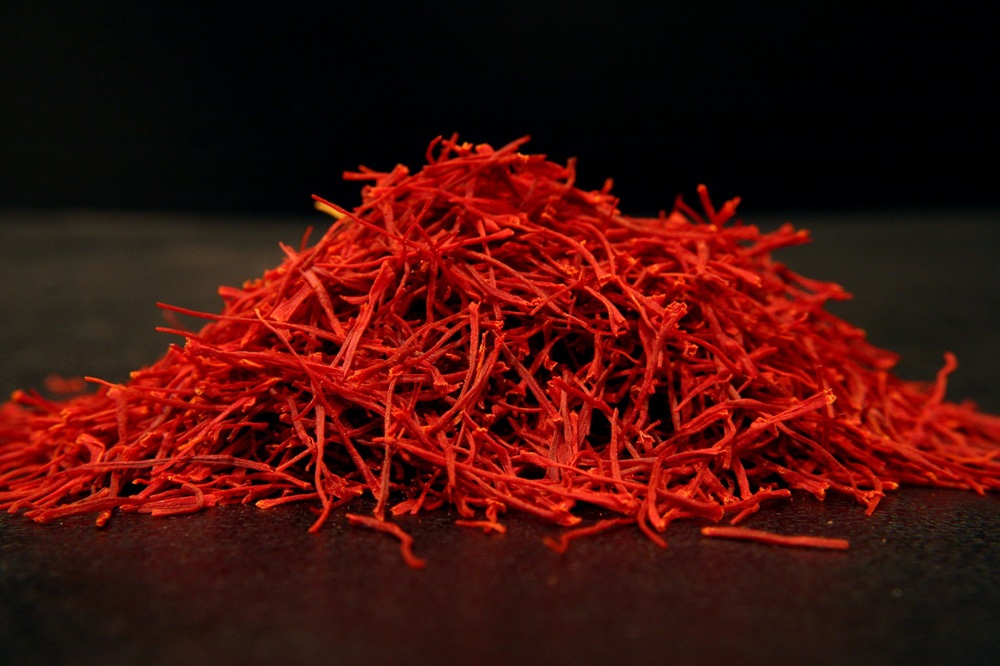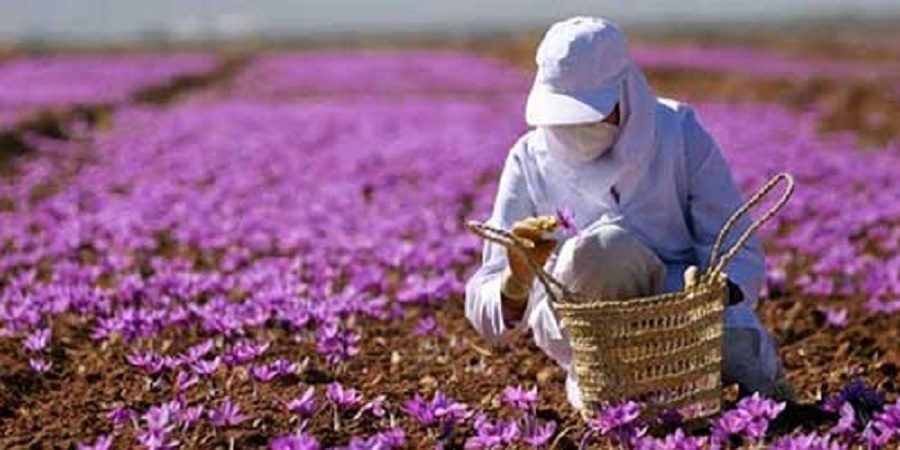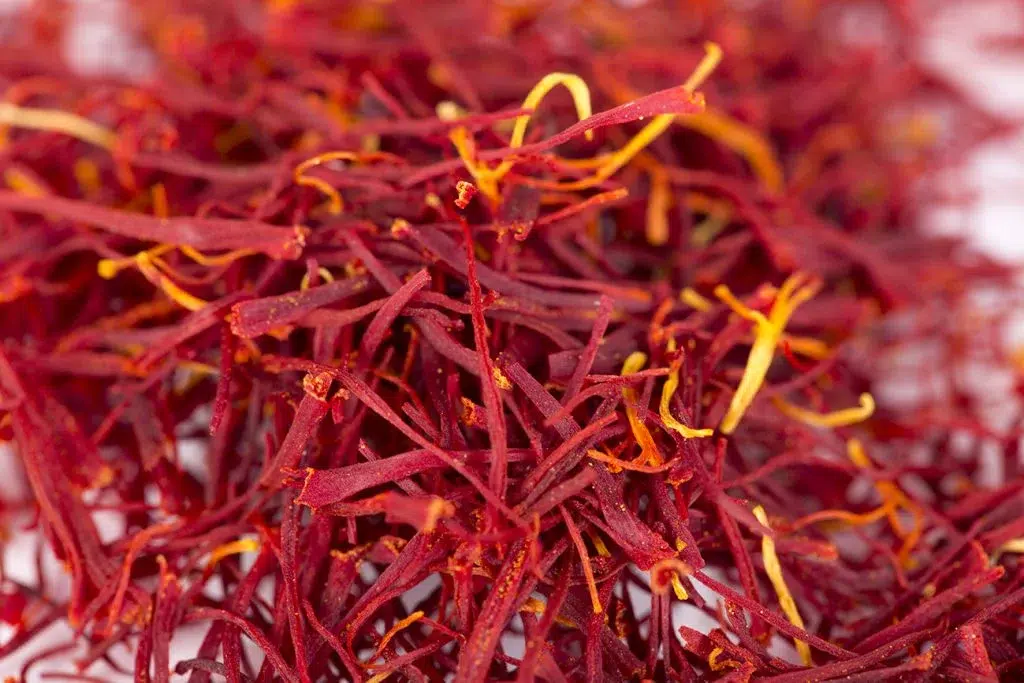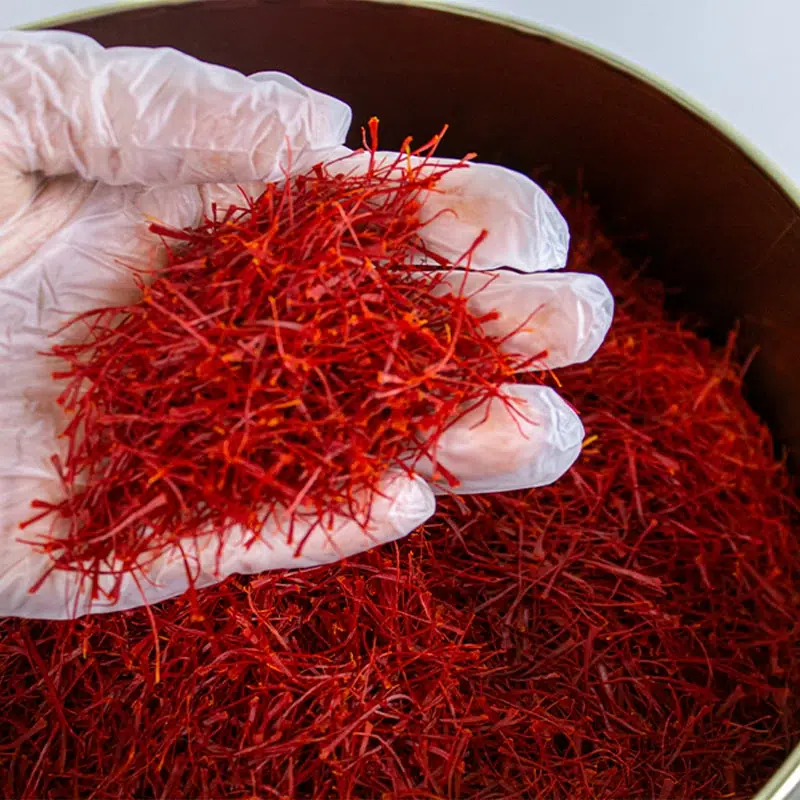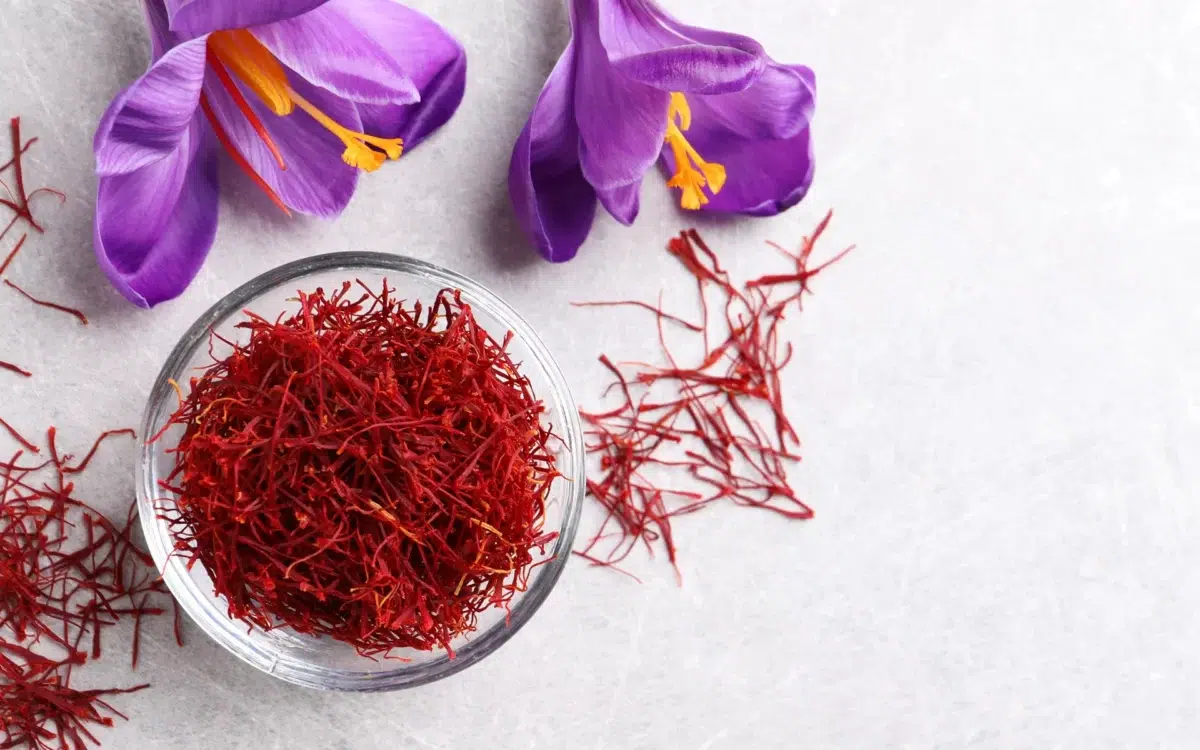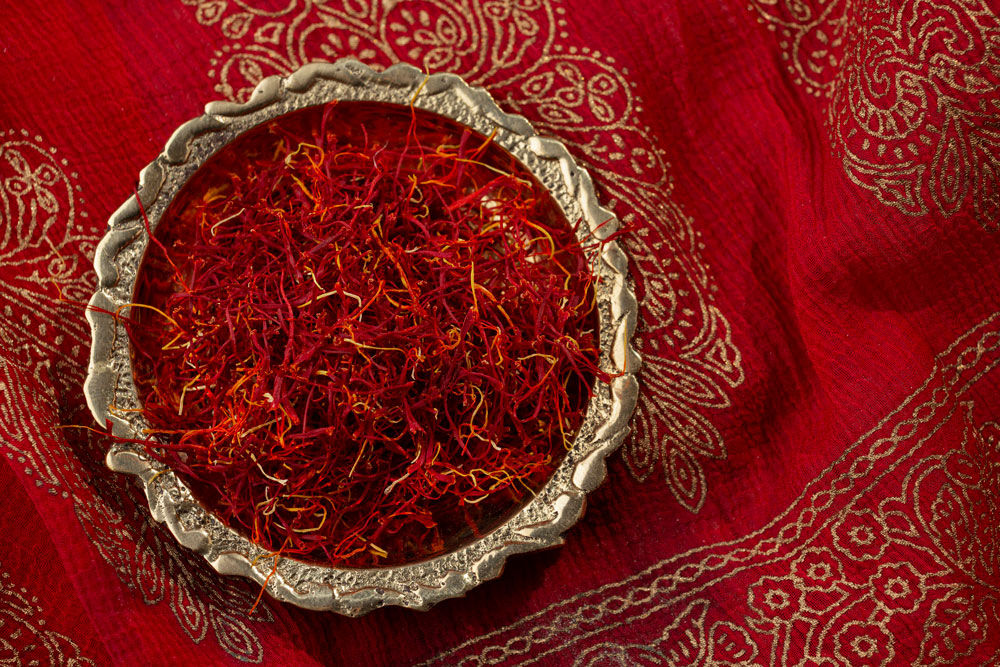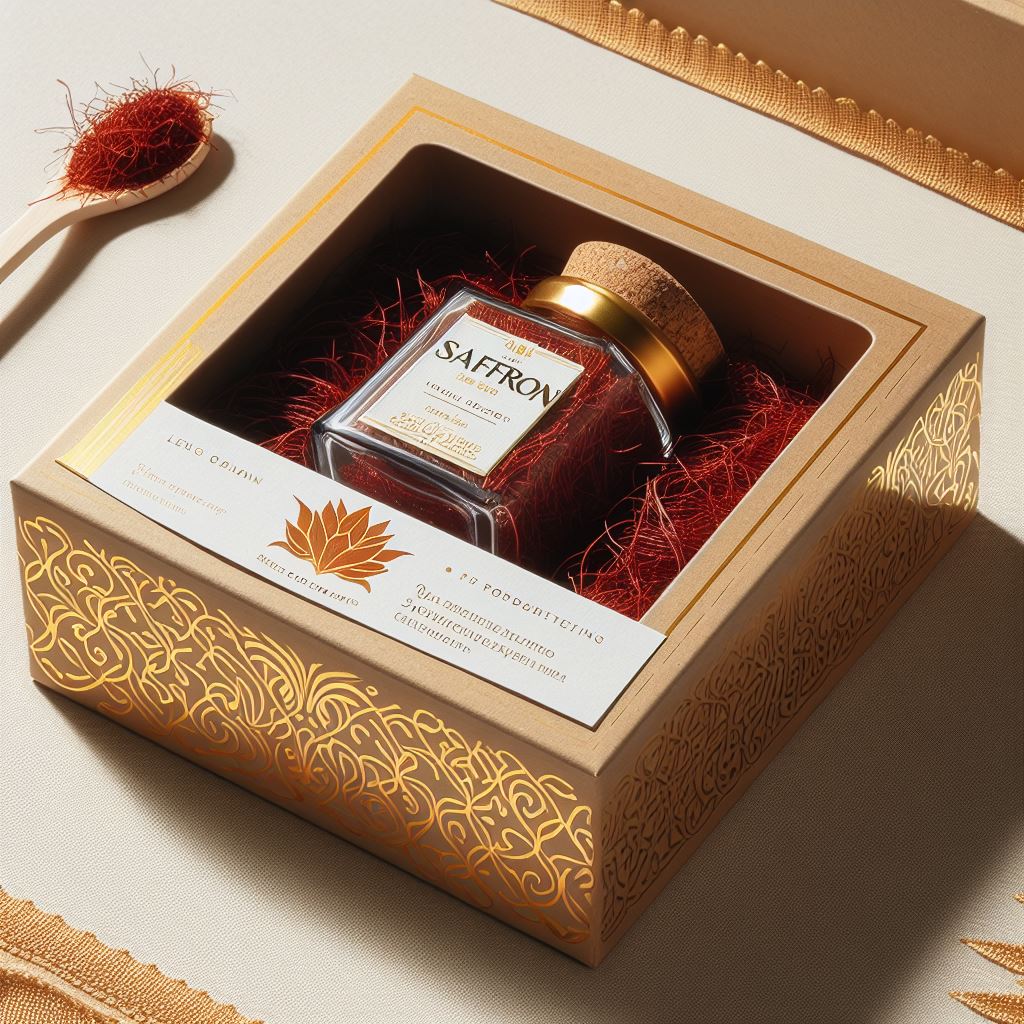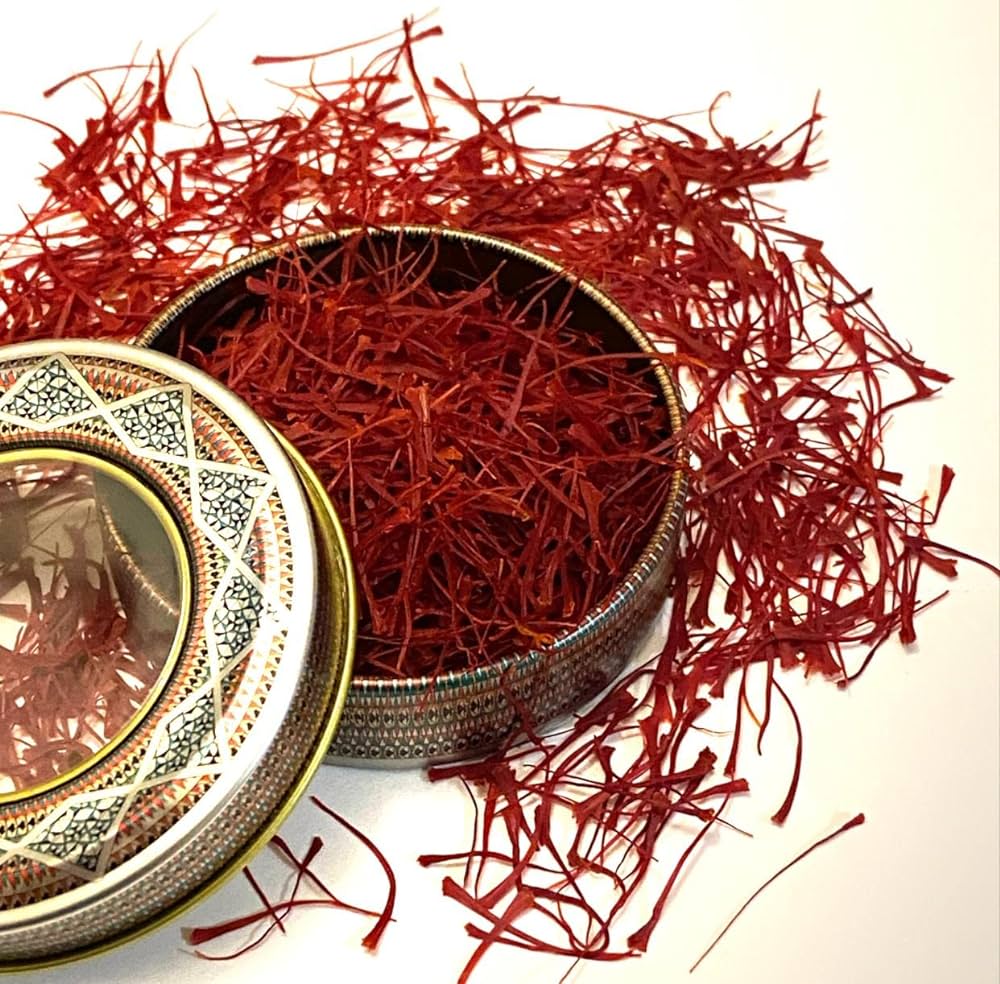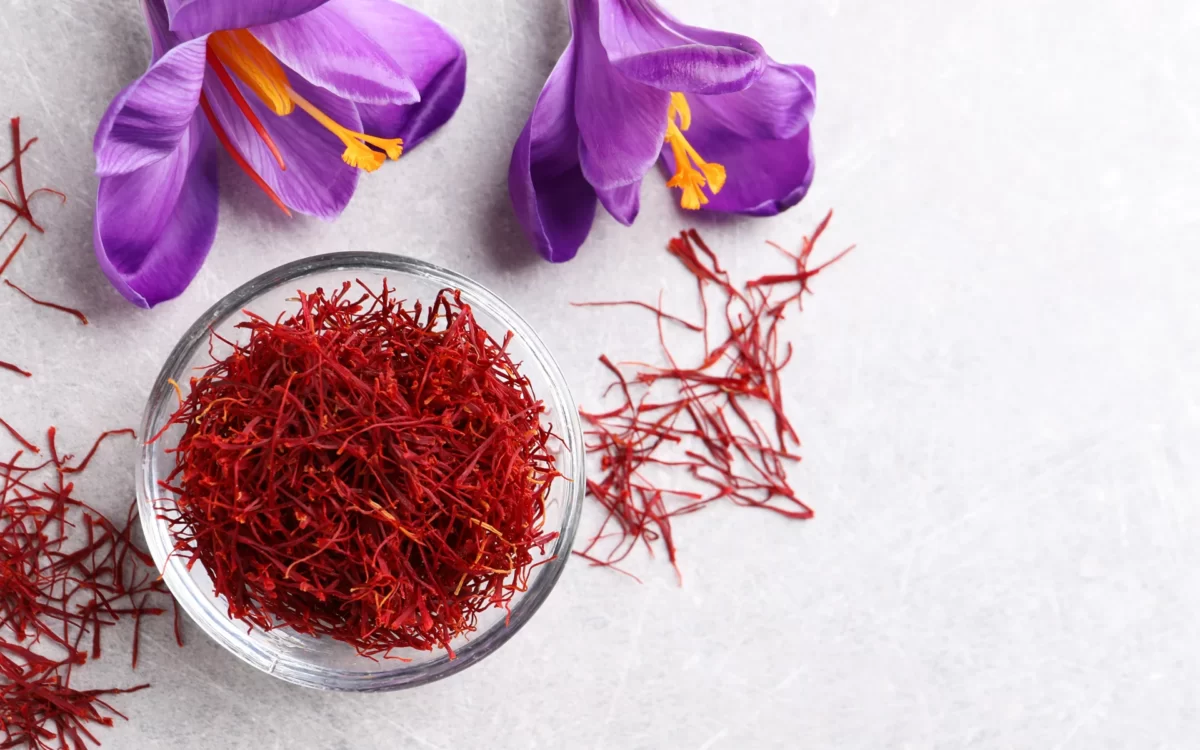It’s the poshest spice of all, often worth its weight in gold. But saffron also has a hidden history as a dye, a luxury self-tanner, and even a serotonin stimulant. That’s right, this episode we’re all about those fragile red threads plucked from the center of a purple crocus flower. Listen in as we visit a secret saffron field to discover why it’s so expensive, talk to a clinical psychologist to explore the science behind saffron’s reputation as the medieval Prozac, and explore the spice’s off-menu role as an all-purpose beautifier for elites from Alexander the Great to Henry VIII.
Saffron’s origins are a mystery, with competing claims placing the wild plant’s origins in regions along a wide, semiarid swath from Greece, in the eastern Mediterranean, to Central Asia. Today, the vast majority is still grown in that belt, with Iran leading the world’s production. But in the 1500s and 1600s, the center of the saffron universe briefly shifted from the sun-baked Mediterranean to rainy England. One particular region of England became so internationally famous for its saffron—in fact, each autumn, the entire area was carpeted in purple petals—that the local market town of Chepying Walden changed its name to Saffron Walden. But by the 1800s, England’s saffron fields had vanished entirely. Two hundred years later, a restless geophysicist named David Smale decided to try cultivating English saffron again. This episode, we visit his field at a secret location in Essex to learn how saffron is grown, hand-harvested, and dried—and about Smale’s uphill battle to uncover the lost art of successfully coaxing saffron from England’s soggy soils.
Smale also told us that “crokers,” as people who harvest saffron are called, have to take a break during packing to avoid getting the giggles. “It’s got a distinctive smell,” said Smale. “It’s beautiful and it’s quite heady—you have to get fresh air every so often because it is a narcotic in big quantities.” It turns out saffron’s mood-altering reputation has some serious science—and some surprising history—behind it. To learn more, we talk with the clinical psychologist Adrian Lopresti, who’s studying saffron’s efficacy as an antidepressant. We also speak with the musicologist Volker Schier about the cache of letters he discovered, which reveal that medieval nuns were hooked on the stuff. “I call it singing under the influence,” Schier told us. The nuns each had their own stash, he said, which they’d take “if they needed it—as a stimulant.” Join us this episode for all this, plus the recipe for a golden swan, as we explore the secrets of saffron.



